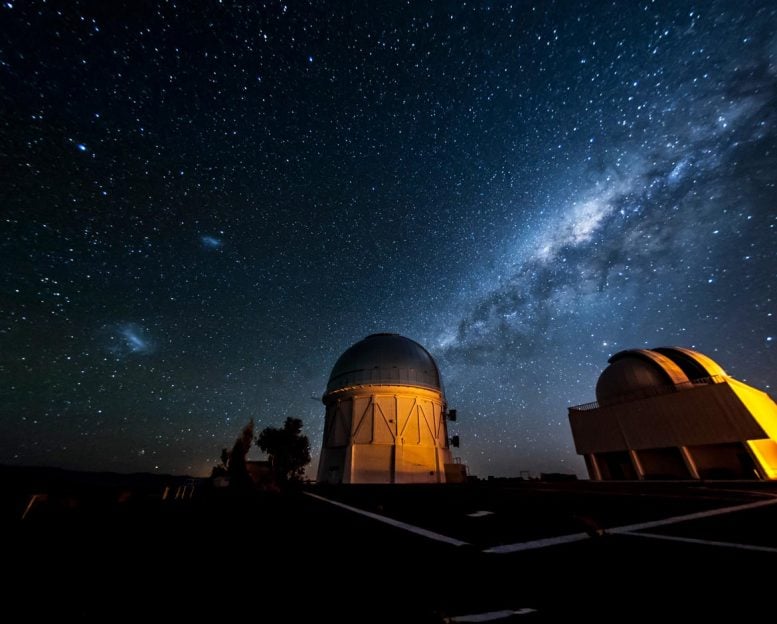
The Dark Energy Survey uses the Blanco 4-meter (13-foot) telescope at the Cerro Tololo Inter-American Observatory in Chile, seen here. A paper analyzing the first data release finds that cosmic voids have environments whose properties are in good agreement with models, being relatively simple and with emitted light that scales linearly with mass. Credit: Reidar Hahn/Fermilab
The Dark Energy Survey (DES) program uses the patterns of cosmic structure as seen in the spatial distribution of hundreds of millions of galaxies to reveal the nature of “dark energy,” the source of cosmic acceleration. Since it began in 2013, DES has mapped over ten percent of the sky with a digital camera containing 570 million pixels and five optical filters that provide galaxy colors to estimate redshift distances. Center for Astrophysics (CfA) astronomers are part of a team of over 400 scientists in seven countries working on DES, and last year it released the first set of data.
Cosmic voids occupy most of the volume of the universe. Unlike clusters of galaxies and other dense structures, which are strongly affected by gravitational effects, not to mention processes associated with galaxy formation, these voids are the most underdense regions of the universe and have relatively simple dynamics. This makes them particularly straightforward probes for constraining cosmological parameters.
CfA astronomer David James is a member of the DES Collaboration and one of the co-authors on a new paper analyzing the first data release, with the aim of describing the relationship between the mass and light around cosmic voids. The scientists use statistical modeling to analyze both the 2-D distribution of galaxies and their 3-D distribution, the latter obtained from calculating galaxy distances from their photometrically determined redshifts. They find the two methods agree well with each other, and with models in which the physics of void environments is very simple, and in which the amount of emitted light scales directly with the mass. Voids with diameters between about one hundred and six hundred million light-years fit well enough to enable tests of the mass-light relationship to better than ten percent. With future observations, the improved statistics should enable useful new consistency tests of gravity and General Relativity and dark-matter scenarios.
Reference: “Dark Energy Survey year 1 results: the relationship between mass and light around cosmic voids” by Y Fang, N Hamaus, B Jain, S Pandey, G Pollina, C Sánchez, A Kovács, C Chang, J Carretero, F J Castander, A Choi, M Crocce, J DeRose, P Fosalba, M Gatti, E Gaztañaga, D Gruen, W G Hartley, B Hoyle, N MacCrann, J Prat, M M Rau, E S Rykoff, S Samuroff, E Sheldon, M A Troxel, P Vielzeuf, J Zuntz, J Annis, S Avila, E Bertin, D Brooks, D L Burke, A Carnero Rosell, M Carrasco Kind, R Cawthon, L N da Costa, J De Vicente, S Desai, H T Diehl, J P Dietrich, P Doel, S Everett, A E Evrard, B Flaugher, J Frieman, J García-Bellido, D W Gerdes, R A Gruendl, G Gutierrez, D L Hollowood, D J James, M Jarvis, N Kuropatkin, O Lahav, M A G Maia, J L Marshall, P Melchior, F Menanteau, R Miquel, A Palmese, A A Plazas, A K Romer, A Roodman, E Sanchez, S Serrano, I Sevilla-Noarbe, M Smith, M Soares-Santos, F Sobreira, E Suchyta, M E C Swanson, G Tarle, D Thomas, V Vikram, A R Walker, J Weller, (The DES Collaboration), 7 October 2019, Monthly Notices of the Royal Astronomical Society.
DOI: 10.1093/mnras/stz2805

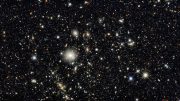
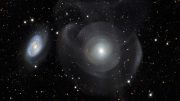
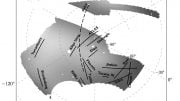
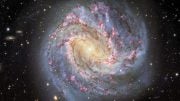
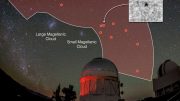
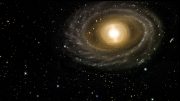
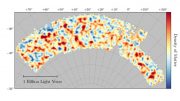
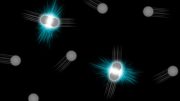
The question of galaxy development is a troubling one. How in the world did a minuscule force like gravity ever attract particles flying apart from the massive force of the Big Bang to form anything, never mind galaxy cores! And the universe continues to expand at about 67 km (41 mi) per second, even now. And, BTW, where did all this matter and energy come from in the first place? Surely you don’t think it all just happened to be there, from nothing, at the Big Bang?
Perhaps String Theory offers a way.
According to String Theory, a brane (dimensional membrane) surrounds our universe. What if such branes, rather than Black Holes, are also the centers of galaxies? Superheated gas would also form around branes, and they would explain how the matter in the universe became concentrated as galaxies even as the universe was, and still is, flying apart from the Big Bang at a rate that absolutely won’t allow any matter (quarks, even) to gravitationally attract each other to form anything. It would also explain those low-mass stars at the center of the Milky Way and the Andromeda galaxy, and other curious phenomena seen at those centers. Specifics about the physical creation of galaxies using the quantum foam and similar to Hawking radiation are described in my YouTube https://www.youtube.com/watch?v=cQUMq2Z11Jc&t=3s